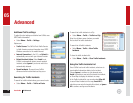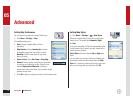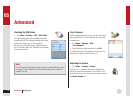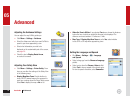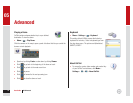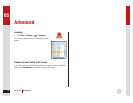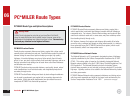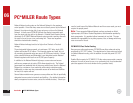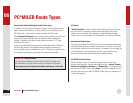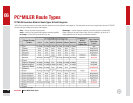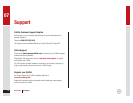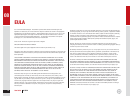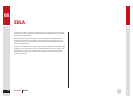
PC*MILER Route Types
38
06
User Guide 06 PC*MILER Route Types
need to travel beyond the National Network and the access roads, you must
acquire the proper permit.
Note: These suggested National Network routings are based on offi cial
highway maps, the Code of Federal Regulations, and information provided by
state governments. It is provided without a warranty of any kind. The user
assumes full responsibility for any delay, expense, loss, or damage which may
occur as a result of its use.
PC*MILER 53 Foot Trailer Routing
Because every mile equals money, PC*MILER now offers enhanced routing
specifi cally for 53’/102’’ trailers. The calculations for these routes are based
on National Network routing, with the addition of roads that permit 53’/102’’
trailers.
Detailed Route reports for PC*MILER 53’ Trailer routes now provide a warning
wherever the route is forced to use a non-conforming link (a red exclamation
point also appears in the route window for the generated route).
National Network routing stays on the National Network to the maximum
extent possible. Given that many areas are not directly served by the National
Network, the origin and stop-offs of your route may not be on the National
Network. In these cases PC*MILER will take the shortest reasonable path
from the origin and stop-offs to the Network. Detailed Route Reports (driving
directions) for PC*MILER National Network routes provide a warning wherever
the route is forced to use a non-conforming link. These road segments
should be checked before traveling.
National Network mileage tends to be higher than Shortest or Practical
mileage.
These designated highways permit, at a minimum, 102” wide, single 48 ft.
trailers and tandem 28 ft. trailers. The Interstate system and most, but not
all, remaining designated routes are open to 80,000 pound vehicles. Certain
states, notably Arkansas and Mississippi, have designated certain National
Network segments with less than an 80,000 pound capacity.
In addition to the National Network highways, access routes and access
policies are components of routing STAA dimensioned trucks. The Federal
government has mandated that no state may prohibit travel from the National
Network for a minimum of one road mile unless safety restrictions apply.
Additionally, no state may deny reasonable access to terminals and facilities
for food, fuel, repairs and rest.
Several states maintain more generous access policies and lists of specifi cally
designated access routes to terminals and facilities. (For detailed information
about pre-approved access routes, contact the individual states.) Should you



